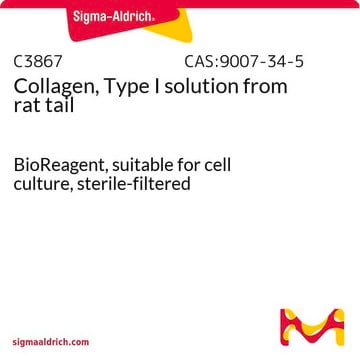Products may be shipped at a different temperature than the recommended long-term storage temperature. If the product quality is sensitive to short-term exposure to conditions other than the recommended long-term storage, it will be shipped on wet or dry-ice. If the product quality is NOT affected by short-term exposure to conditions other than the recommended long-term storage, it will be shipped at ambient temperature. As shipping routes are configured for minimum transit times, shipping at ambient temperature helps control shipping costs for our customers. For more information, please refer to the Storage and Transport Conditions document: https://www.sigmaaldrich.com/deepweb/assets/sigmaaldrich/marketing/global/documents/316/622/storage-transport-conditions-mk.pdf
360589
Tetraidrofurano
≥99.0%, ACS reagent, contains 250 ppm BHT as inhibitor, suitable for HPLC
Sinonimo/i:
THF, Ossido di butilene, Ossido di tetrametilene, Ossolano
About This Item
143 mmHg ( 20 °C)
Prodotti consigliati
Nome del prodotto
Tetraidrofurano, contains 250 ppm BHT as inhibitor, ACS reagent, ≥99.0%
Grado
ACS reagent
Livello qualitativo
Densità del vapore
2.5 (vs air)
Tensione di vapore
114 mmHg ( 15 °C)
143 mmHg ( 20 °C)
Saggio
≥99.0%
Stato
liquid
Temp. autoaccensione
610 °F
contiene
250 ppm BHT as inhibitor
Limite di esplosione
1.8-11.8 %
tecniche
HPLC: suitable
Impurezze
≤0.015% peroxide (as H2O2)
≤0.05% water
Residuo dopo evaporazione
≤0.03%
Colore
APHA: ≤20
Indice di rifrazione
n20/D 1.407 (lit.)
pH
~7
P. ebollizione
65-67 °C (lit.)
Punto di fusione
−108 °C (lit.)
Solubilità
water: soluble
Densità
0.889 g/mL at 25 °C (lit.)
Stringa SMILE
C1CCOC1
InChI
1S/C4H8O/c1-2-4-5-3-1/h1-4H2
WYURNTSHIVDZCO-UHFFFAOYSA-N
Cerchi prodotti simili? Visita Guida al confronto tra prodotti
Descrizione generale
Applicazioni
- Organic synthesis
b) Organometallic compounds
c) Reformatsky
d) Lithiation
e) Hydride reduction
Accoppiamento catalizzato da metalli (Heck, Stile, Suzuki)
g) Lewis acid mediated reactions
- Crystallization
- Polymerization. Ex. Polimerizzazione RAFT (polimerizzazione a trasferimento di catena con addizione-frammentazione reversibile) del p-acetossistirene.
- Coatings
- Come ligando O-donatore per formare complessi di coordinazione.
- Come solvente di fase mobile nella cromatografia liquida ad alte prestazioni.
Caratteristiche e vantaggi
Prodotti correlati
Avvertenze
Danger
Indicazioni di pericolo
Consigli di prudenza
Classi di pericolo
Acute Tox. 4 Oral - Carc. 2 - Eye Irrit. 2 - Flam. Liq. 2 - STOT SE 3
Organi bersaglio
Central nervous system, Respiratory system
Rischi supp
Codice della classe di stoccaggio
3 - Flammable liquids
Classe di pericolosità dell'acqua (WGK)
WGK 1
Punto d’infiammabilità (°F)
-6.2 °F - closed cup
Punto d’infiammabilità (°C)
-21.2 °C - closed cup
Scegli una delle versioni più recenti:
Possiedi già questo prodotto?
I documenti relativi ai prodotti acquistati recentemente sono disponibili nell’Archivio dei documenti.
I clienti hanno visto anche
-
How is shipping temperature determined? And how is it related to the product storage temperature?
1 answer-
Helpful?
-
-
How can I determine the shelf life / expiration / retest date of this product?
1 answer-
If this product has an expiration or retest date, it will be shown on the Certificate of Analysis (COA, CofA). If there is no retest or expiration date listed on the product's COA, we do not have suitable stability data to determine a shelf life. For these products, the only date on the COA will be the release date; a retest, expiration, or use-by-date will not be displayed.
For all products, we recommend handling per defined conditions as printed in our product literature and website product descriptions. We recommend that products should be routinely inspected by customers to ensure they perform as expected.
For products without retest or expiration dates, our standard warranty of 1 year from the date of shipment is applicable.
For more information, please refer to the Product Dating Information document: https://www.sigmaaldrich.com/deepweb/assets/sigmaaldrich/marketing/global/documents/449/386/product-dating-information-mk.pdfHelpful?
-
-
What is the Department of Transportation shipping information for this product?
1 answer-
Transportation information can be found in Section 14 of the product's (M)SDS.To access the shipping information for this material, use the link on the product detail page for the product.
Helpful?
-
-
Can you recommend a Solvent Extractor for organics from aqueous solution?
1 answer-
Solvent extractors are often used for the quantitative extraction of organics from aqueous solutions and separations in immunoassays. The MIXXOR system has been applied successfully in many laboratory solvent extraction operations and is ideal for the rapid screening of alternative solvents for specific extraction problems.
Helpful?
-
-
Who do I contact about larger solvent volume needs?
1 answer-
Email us at [email protected] or visit Sigma-Aldrich Fine Chemicals for development and manufacturing-scale inquiries: [email protected]
Helpful?
-
-
What apparatus do you recommend for HPLC solvent filtration?
1 answer-
The Sigma-Aldrich Vacuum Filtration Assembly gives you all the components you need including: funnel top, fritted glass funnel support, filtration flask, aluminum clamp, and silicone stopper. The Acrodisc Syringe Filters offer high quality filtration for analytical samples, certified for HPLC to ensure low extractable and available in a broad range of membranes to meet sample compatibility requirements.
Helpful?
-
-
What are some of the preservatives used in the most common ethers and chlorinated solvents and why are they added?
1 answer-
Certain solvents will degrade over time requiring special handling and storage considerations. In addition, the products of certain degradation processes pose a potential safety risk if present at sufficiently high levels. For these types of materials, small amounts of stabilizing chemicals are added to slow down or stop material degradation.
Helpful?
-
-
What are the options for drying solvents?
1 answer-
Sigma-Aldrich offers a full range of high-purity solvents with extremely low water levels specifically manufactured for moisture sensitive Organic and Biotech applications. Sigma-Aldrich also carries various drying agents such as molecular sieves, which are typically compatible with organic solvents.
Helpful?
-
-
Why do peroxides form in certain solvents and how do I test for it?
1 answer-
A significant number of laboratory solvents can undergo autoxidation under normal storage conditions to form unstable and potentially dangerous peroxide by-products. Molecular structure is the primary factor relating to a material’s potential for hazardous peroxide formation. It is important to understand the stability of materials in use and if unclear, consult Sigma-Aldrich Technical Support, [email protected].
Helpful?
-
Active Filters
Il team dei nostri ricercatori vanta grande esperienza in tutte le aree della ricerca quali Life Science, scienza dei materiali, sintesi chimica, cromatografia, discipline analitiche, ecc..
Contatta l'Assistenza Tecnica.







